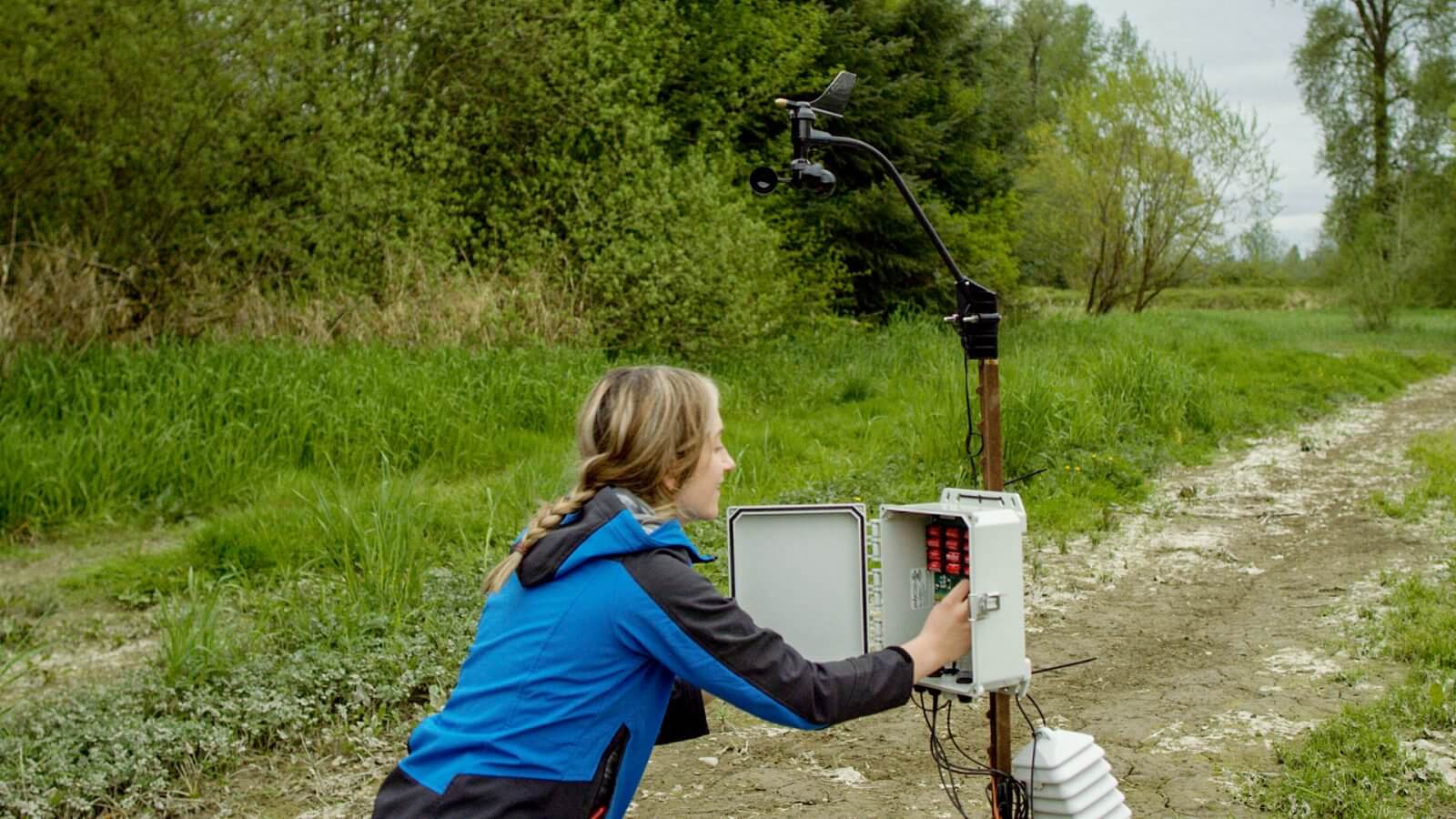FarmBeats: Microsoft and Seeed’s AIoT Solution for Precision Agriculture and Technology Democratization for Local Farmers
By Ye Seong SHIN 3 years agoIn 2019, by partnering with Seeed Studio, Microsoft developed an AIoT solution for local farmers – “FarmBeats” Project. The Project has been designed to deliver Internet connectivity and to make precision farming to local farmers at affordable costs. More specifically, Seeed’s Sensor Box was developed and used for the Project to monitor various environmental conditions that affect the crop growth. As a result, agricultural productivity rate has been increased, while overall maintenance costs and human labor inputs have been minimized. FarmBeats Project has been recognized to help accelerate the UN’s SDGs 2, 9, 12, 5, 6, 7, 8, 4, 13, 17, 1 and 10.
Project Name: FarmBeats Project
Deployment Location: USA, Kenya, Australia
Targeted Industry Type: Agriculture
Project Partner(s): 

Perhaps we can have a quick reality check. Man-made environmental disasters, climate change, unsustainable corporate behaviors, pollution, and increasing socioeconomic inequalities are some of the buzzwords that define our unsustainable epoch. Now, let’s narrow down the scope of today’s agenda here. According to the UN’s Food and Agriculture Organization (FAO), the world’s population will reach 9.1 billion by 2050 (Figure 1), with a rapidly-rising population of developing countries. Consequently, urbanization will steadily increase, and current food production would need to increase by 70% to accommodate the upcoming urban population. (FAO, 2009).
Unfortunately, however, the amount of arable land is decreasing, not to mention the discourse of natural resource deficiency. Since agriculture has been historically a key factor in the development of humanity, recent years have witnessed many technological innovations to up-scale traditional farming techniques by making technology cheaper, cost-effective, and easier than ever. Nevertheless, as Microsoft shared, even if technological solutions are introduced to local farmers, there still might be fundamental needs – like electricity or Internet connectivity – that should be addressed hand-in-hand (Microsoft, 2015).
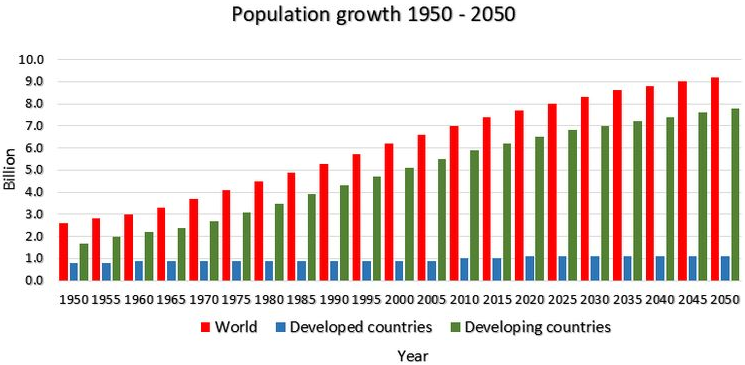
Figure 1. Population Growth Estimation by 2050
ⓒ FAO & The World Bank (Silva, 2018)
What’s the Challenge?
How to make precision farming accessible and affordable for local farmers’ daily usage and their technological empowerment?
What’s the Project About?
FarmBeats is an AIoT (AI + IoT) hardware and software solution designed for local farmers in order to help augment farms’ productivity rate, while reducing overall maintenance costs and human labor inputs (Figure 2). FarmBeats was first conceived and tested by Microsoft Research at different locations of the world during 2015-2018, and was later adopted by Microsoft to refine and scale up the pilot project through partnership with Seeed Studio on developing customized hardware device – Sensor Box – in 2019.
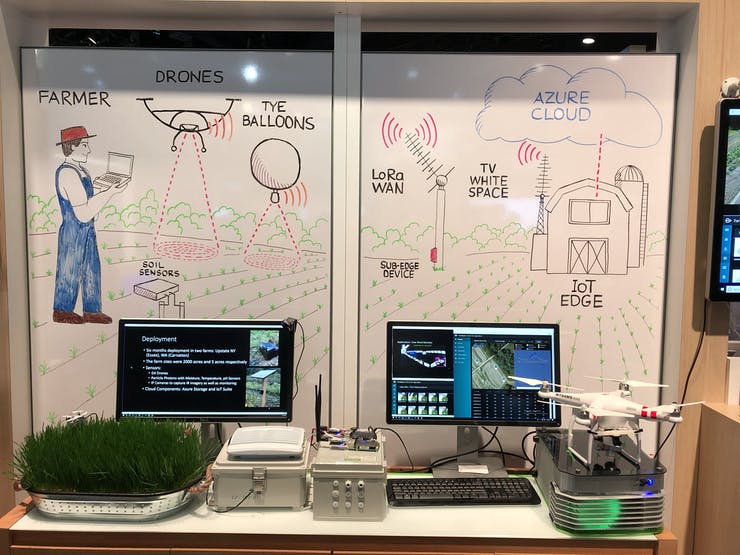
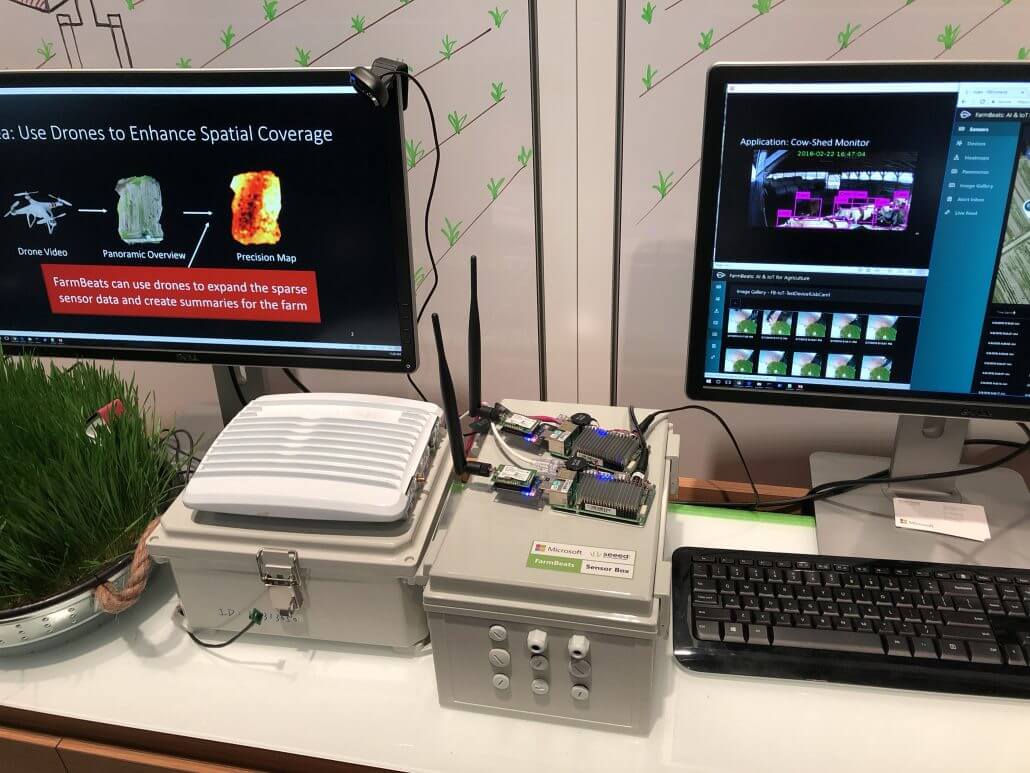
Figure 2. Seeed’s Environmental Sensor Box for FarmBeats
© Jay Templeton & AWARE Group
Microsoft Research is a research institution of Microsoft, which is keen on decentralizing scientific and technological innovations to facilitate self-empowerment of individuals and organizations. By collaborating and partnering with multi-stakeholders from various sectors and backgrounds, Microsoft Research seeks to address the most pressing challenges of our time, that shares an affinity with the UN’s SDGs. (Microsoft Research, n.d.).
Mr. Ranveer Chandra, the Chief Scientist at Azure Global at Microsoft Research who initiated the FarmBeats Project, reflects on the bigger mission of FarmBeats as a product to feed the growing world population by cultivating more food, good food, and nutritious food without undermining the environment. To his dismay, he shared that even though advantages of data-driven precision agriculture have been widely recognized, adoption rate of the technology remains at a low level due to its connectivity costs (Pinduoduo Inc., 2020):
“One of the biggest reasons existing solutions are so expensive is because of connectivity in the farm. … To address this problem, we’re using technology … called ‘TV White Spaces’. … The way we do that is that, embedding … Wifi signals in empty TV channels. … [which] have excellent propagation characteristics. … these channels are over-the-air TV channels, the TV you watch using antennas. … In a farm, most of these TV channels are just white and noisy, and the more empty TV channels there are, the more unused spectrum there is, the more capacity to send and receive data. Our vision is just like [how] Wifi connects your house, these TV white spaces spectrum can be used to connect your entire farm.” (Figure 3)

Figure 3. TV Channel on Network & Unused TV Channel Displaying White Spaces (Pinduoduo Inc., 2020)
With a lofty goal to democratize emerging technologies for the agriculture sector, Seeed developed a customized Sensor Box for FarmBeats solution to collect environmental data for the major part of this partnership (Figure 4 & 2). The Sensor Box contains 8 different sensors to gather real-time data of a variety of elements – which affect the crop growth throughout the cultivation process. The data includes but not limited to, wind speed, wind direction, soil moisture and temperature, CO2, atmospheric moisture and temperature, atmospheric pressure, rain, and light exposure.
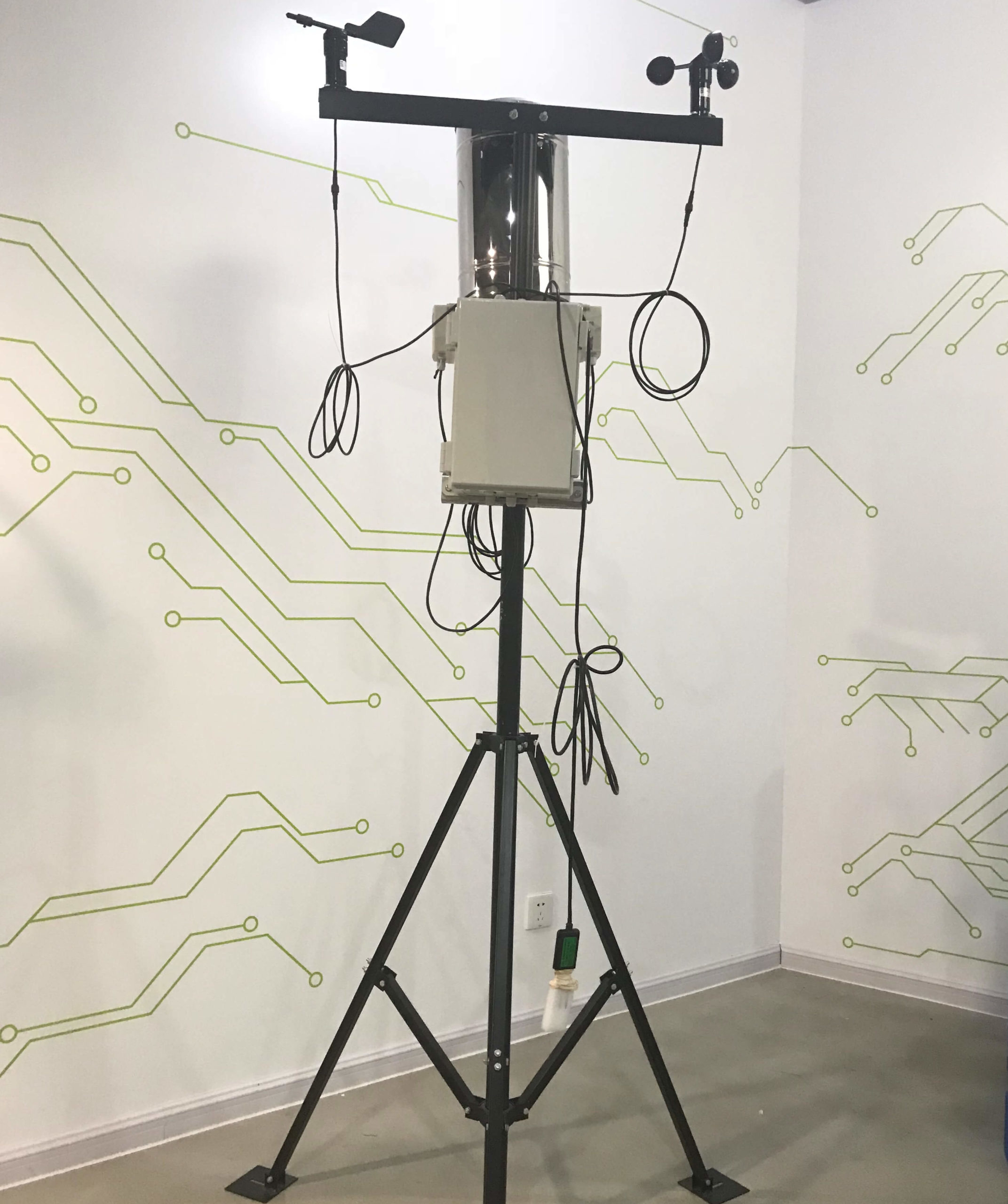
Figure 4. Seeed’s Environmental Sensor Box for FarmBeats
So, how does this FarmBeats solution work? First, the Sensor Box’s sensors start collecting environmental data, and all the data is gathered at an IoT Base Station. Second, the collected data is sent to FarmBeats gateway (a Windows PC) by TVWS, and eventually to Azure Cloud where all the data will be stored, refined, and connected to the world server. Third, simplified and visualized data is made available for farmers to view through the FarmBeats app (Figure 5).
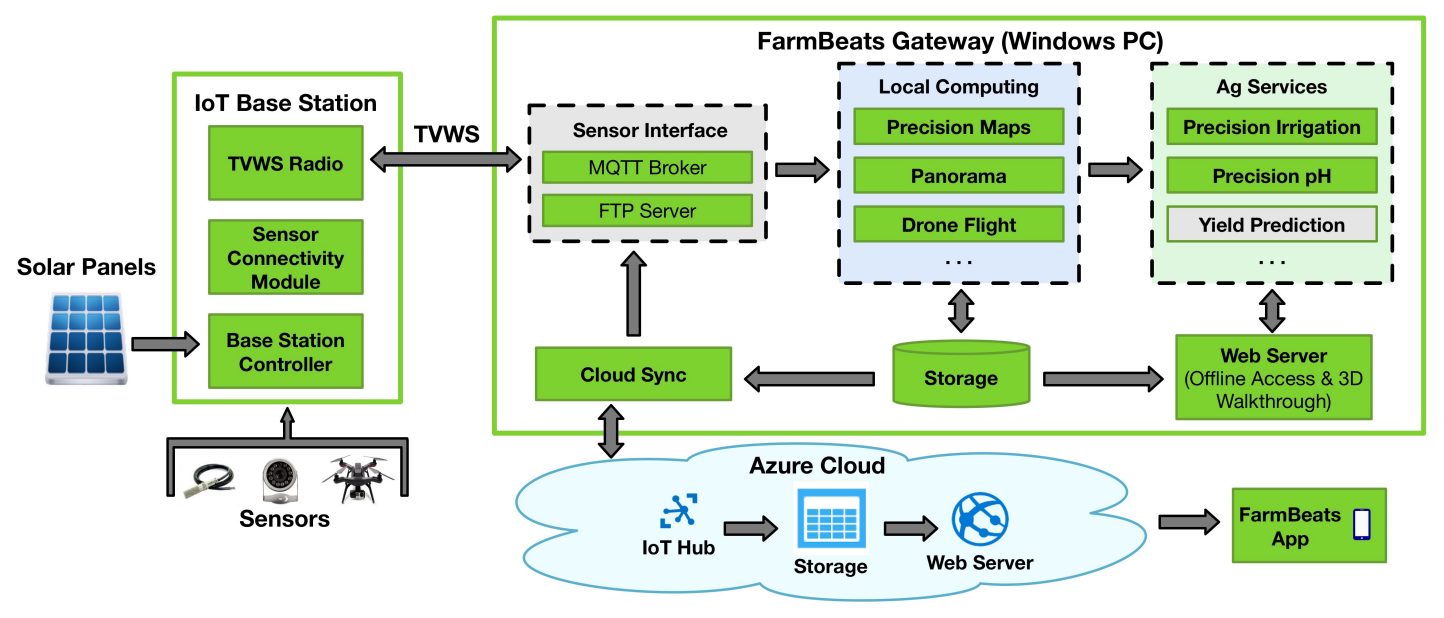

Figure 5. How FarmBeats Works and Visualized Sensor Data (Vasisht et al, 2017)
The first pilot version of the FarmBeats solution was deployed in 20 Proof of Concept (POC) partners’ farmlands of Microsoft, including Dancing Crow Farm (Figure 6). Since then, Seeed has been diligently working for upgrading the Sensor Box based on on-site feedback from Microsoft. While enhancing the features of the Sensor Box, Seeed found that there was a necessity to devise a more refined IoT device for monitoring various environmental factors outdoors. As a result, this inspired the birth of Seeed’s SenseCAP LoRaWAN series, which has been integrated into FarmBeats project to be exhibited at Microsoft’s HQ in Redmond municipality in the US (Figure 7). Afterwards, FarmBeats Project received recognition from Bill & Melinda Gates Foundation for its contribution to the agriculture sector.
Figure 6. Zerina Kapetanovic, a FarmBeats Hardware Researcher,
Checking the FarmBeats’ Outdoor Sensors at Dancing Crow Farm
ⓒ Michael Victor (University of Washington, 2020)
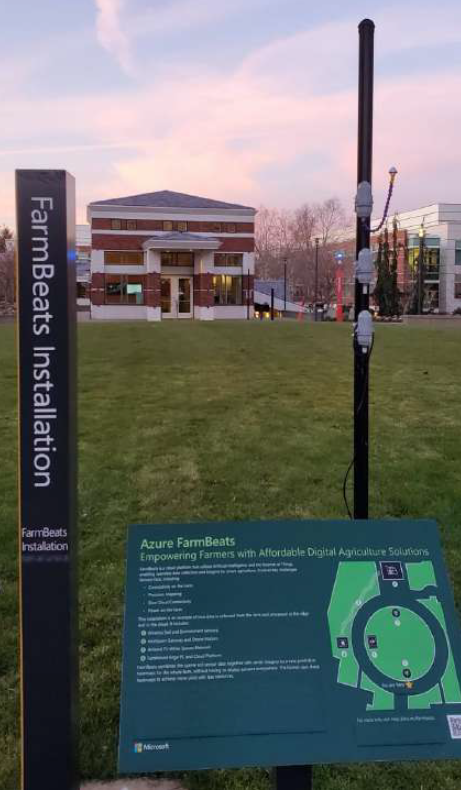
Figure 7. Seeed’s SenseCAP Exhibited at Microsoft’s HQ in Redmond, USA
© Jay Templeton & AWARE Group
As a result of the project, Ranveer Chandra explains how it is contributing to precision agriculture, intelligent agriculture, and sustainable agriculture (Pinduoduo Inc., 2020):
“One of the things we do with FarmBeats is, once you deploy a sensor, [the software platform] not only tells you what the sensor values are right now [=in real time], but [also it] .. can make predictions of what these sensor values would look like up to 5 days in advance. … This prediction is based on weather station data, and then based on the weather station data, we’ve trained the models, and then when you put a sensor in the farm, we do transfer learning to start making very hyper local decisions about what the weather will be in the farm itself. ”
“… Precision agriculture has been shown to improve yields, reduce costs, and is also better for the environment [to ensure sustainability]. For example, if you had a map like this, say, for soil moisture, you could apply water only where it is needed, … you could apply nutrients only when it is needed, and that will help you to use less water and save costs.”
He continues on sharing why data-driven agriculture is increasingly becoming an essential breakthrough for farmers:
- Connected Farms: Data collection with wireless sensors deployed on the farms at various sights, with drones flying on the farms, and with connected farm equipment
- AI Advisory on Farm Conditions: Real-time, chronological and actionable insights according to the changing environmental conditions of the farms enabled by remote sensing and predicting weather patterns
- Precision Farming: Resource efficiency of water, fertilizers, weeding and spraying labors through providing the inputs only when they are needed, where they are needed
- Traceability for Predictability: Blockchain to track and trace the usage of resources and to make better informed decisions based on analyzed data in chronological order (Pinduoduo Inc., 2020)
Which SDGs Are Relevant?
To reflect back on FarmBeats project from the sustainability perspective, the following SDGs have been found to be most relevant (Figure 8):
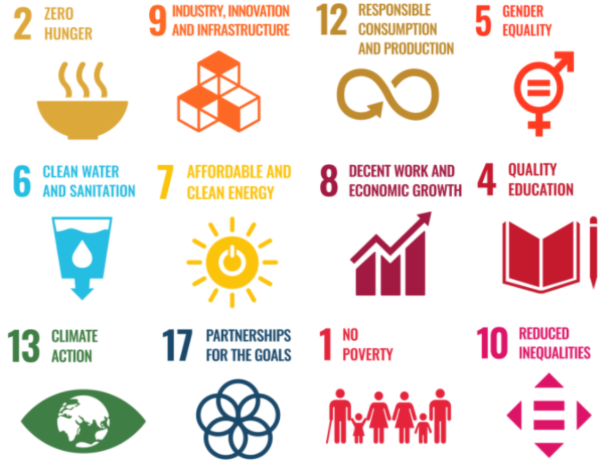
Figure 11. FarmBeats’ Contribution to the SDGs (UN, 2016)
To build a deeper understanding about overarching issues within the above-mentioned SDGs, it is necessary to take a look at relevant Targets within the SDGs:
- Eliminate hunger and all forms of malnutrition by ensuring access to food for all, including the impoverished and underserved population (Targets 2.1 & 2.2)
- Promote sustainable food production systems and implement resilient agricultural practices that increase productivity and production, that help maintain ecosystems, that strengthen capacity for adaptation to climate change, and that augment incomes of small-scale local food producers (Targets 2.3 & 2.4)
- Augment technological deployment for increased agricultural productivity (Target 2.A)
- Facilitate inclusive and sustainable industrialization through the active adoption of clean and environmentally-sound technologies for resource-use efficiency, and through upgrading scientific, technological and innovative capacities (Targets 9.2, 9.4, 9.5 & 12.A)
- Augment universal and affordable access to the Internet and ICTs (Targets 9.C & 5.B)
- Promote sustainable management and efficient use of natural resources (ex. water and energy) through prevention and reduction (Targets 12.2, 12.5, 6.4, 7.3)
- Augment global resource efficiency in production (Target 8.4)
- Decrease the usage of chemicals and their release to air, water and soil so as to reduce their negative influences on human health and the environment (Target 12.4)
- Raise awareness that people are knowledgeable about sustainable lifestyles living in harmony with the environment (Targets 12.8 & 4.7)
- Upgrade education, awareness-raising, and human and institutional capacity on climate change adaptation and impact reduction (Target 13.3)
- Promote North-South, South-South and triangular regional and international cooperation on science, technology and innovation knowledge transfers, along with sharing environmentally-sound technologies (Targets 17.6, 17.7 & 17.9)
- Augment global partnership for sustainable development through multi-stakeholder partnerships that mobilize knowledge, expertise, technology and financial resources (Targets 17.16 & 17.17)
- Reach higher levels of economic productivity through technological upscaling and innovation in labour-intensive sectors (Target 8.2)
- Decrease the proportion of men, women and children of all ages living in poverty by half, by means of (including but not limited to) introducing them the new technologies and building resilience (Targets 1.2, 1.4 & 1.5)
- Gradually reach the income growth of the bottom 40% of the population at a rate higher than the national average by reducing income gaps (Targets 10.1 & 10.3)
- Provide equal access for all women and men to affordable and quality technical and vocational education (Targets 4.3 & 4.4)
To conclude, Bill Gates highlighted that any data at the hands of local farmers can make a huge difference (Bill Gates, 2018), and by closing the technological divide, we are making visible impacts for the whole food production system in the world. Indeed, in light of his quote, Seeed will continue to avidly support humanity’s transition to sustainable agriculture practices for the good of the whole society, environment, and future generations.
About Author
Ye Seong SHIN
Sustainability and CSR Manager at Seeed Studio
。
Jointly organize/participate in multi-stakeholder projects/platforms/events/webinars/workshops/hackathons/etc. to accelerate SDGs with local communities and open tech anywhere in the world by connecting with Ye Seong SHIN today on LinkedIn.
。
Seeed Studio is the IoT and AI solution provider for all types of traditional industries’ sustainable digitalization. Since its establishment in 2008, Seeed Studio’s technological products and customization services are used for smart agriculture, smart cities, smart environmental monitoring, smart animal farming, smart aquaculture, meteorological monitoring, STEAM education, and all types of emerging scenarios enabled by the Industry 4.0. With the company’s mission to “Empower Everyone to Achieve Their Digital Transformation Goals” (which shares similar values with SDGs’ Motto of “Leave No One Behind”), Seeed Studio is devoted to using open source technologies for accelerating SDGs with multi-stakeholders from UN agencies, academia, companies, CSOs, governments, public/private organizations, and so on. This is why, Seeed Studio also founded “Chaihuo Maker Space”, and started China’s first Maker Movement by annually organizing “Maker Faire Shenzhen”.
